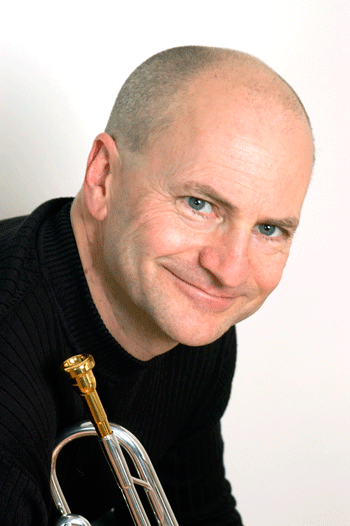The mouthpiece creates the crucial connection between body and instrument, transferring vibrations from your lips to the horn. Finding the right mouthpiece for your body can make a big difference in how you play your instrument.
Rim. The rim is the point of contact and will have the greatest effect on your comfort. The two variables are the width and the shape of the rim. Some are more rounded; others are more flat. Manufacturers employ a number to specify the rim width. Some manufacturers use a higher number to specify a wider rim; some use a smaller number, based on Vincent Bach’s original system.
You’ll need a comparison chart to compare a mouthpiece from one manufacturer to another. Still, that’s only a starting point; you’ll have to see how they feel on your lips to really know the difference.
Cup. Cup volumes are specified by a letter; usually the further down the alphabet, the smaller the cup. (B is larger than C.) Or, a manufacturer may use specific designations such as MS for medium-shallow.
Larger cups may produce a deeper, more resonant tone but make it harder to create the fast vibrations needed for high notes. Smaller cups typically produce a brighter sound and may make it easier to play higher notes.
Throat and Backbore. The throat and backbore affect the blow resistance of the mouthpiece. Some players try to improve a mouthpiece by drilling out the throat. I do not recommend this. The result is unpredictable, and you destroy a carefully calculated balance determined by the mouthpiece maker. For determined do-it-yourselfers, make sure you have a spare in the rather likely scenario that you make things worse, rather than better.
Material. Mouthpieces are usually made from brass, plated with silver or gold. Gold generally feels smoother on the lips although some players find it too slippery. Some mouthpieces are made from plastic, which will not feel as cold on the lips when playing outside.
In my next column, I’ll offer some advice on finding the best mouthpiece for you.
About the Author
Chase Sanborn is a trumpet player and a member of the jazz faculty at the University of Toronto. He is the author of “Brass Tactics,” “Jazz Tactics,” “Tuning Tactics” and “Music Business Tactics.” Chase plays Yamaha trumpets and CS Signature Model mouthpieces from GR Technologies. Find out more about Chase at www.chasesanborn.com.

